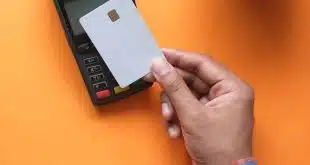n
As the year progresses, predictions from a year or two ago that mobile payments would take off in 2011 or 2012 seem more and more unrealistic. Payments researchers at accounting and consulting firm KPMG think it’s going to be a few more years, and that near-field communication (NFC) systems embedded in phones ultimately will win as the preferred technology of mobile payments.
n
n
KPMG last week released findings from interviews with 145 bankers from around the world as well as about 1,000 respondents from telecommunications companies, tech firms, and others with a stake in mobile banking and payments. The study, “Monetizing Mobile,” reviewed the competing technologies and highlighted the experiences of some banks already involved in mobile ventures.
n
n
Mitch Siegel, an Atlanta-based principal in KPMG’s banking and payments practice, predicts it will be three to five years before mobile payments gain a firm foothold in the U.S. He bases that prediction on the need for financial institutions to test various technologies as well as for merchants to adopt them and banks and phone companies to get mobile technologies into the hands of their customers. Banks, processors, card networks, tech companies, and telcos are testing, or in a few cases using, everything from contactless stickers to 2D bar codes to NFC on Secure Digital (MicroSD) chips to embedded NFC, a contactless technology. PayPal Inc. last week demonstrated a new, NFC-based person-to-person payment service.
n
n
“My view of embedded NFC is that it will eventually win out, but it will take a number of years,” says Siegel. He and colleague Bob Ruark, a director in the banking and payments practice based in Charlotte, N.C., say that while NFC is costly, rival technologies have shortcomings. Short message service (SMS), the technology behind text messaging, for instance, is “too clunky,” according to Ruark, and suffers from regulatory concerns about safety as well has high customer charges.
n
n
Thus, KPMG says its respondents believe embedded NFC, which uses a chip in a mobile phone that communicates via radio waves with an NFC-reading terminal, is emerging as the likely winner in mobile payments. But major obstacles still must be surmounted, including the cost, estimated in the billions of dollars to retrofit point-of-sale equipment and outfit NFC phones, and the lack of devices. So far, the only mobile phone in the U.S. market that’s NFC-capable is the Samsung Nexus S.
n
n
Contactless mobile payments can be implemented in various ways. Besides embedded NFC, deployers can use a companion device such as a sticker, fob, or MicroSD card that has NFC elements and is inserted into a phone. The downside of stickers and fobs is that they’re usually limited to one account whereas embedded NFC makes possible a digital wallet with multiple accounts. Contactless stickers attached to cell phones are more appropriate for pilot programs rather than as an ultimate solution, according to Siegel.
n
n
Inserting a MicroSD card into a phone might be a challenge for many consumers. And even those consumers who would have no problem doing that might not want to devote any of the card’s capabilities for holding photos and other digital content to holding payment data.
n
n
Then there is the longstanding issue of banks and phone companies, the latter of which control the SIM card, or brain, of mobile phones, coming to an agreement on revenue sharing. NFC companion devices make mobile-phone payments possible without the cooperation of the carriers, but payments with embedded NFC devices would be much more problematic. “I do think it’s almost going to be an interchange-like environment,” says Siegel.
n
n
Another issue, according to KPMG, is developing open standards that enable mobile payments across devices and platforms to maximize merchant and consumer adoption. “We need to get open standards for the technology to take [off],” says Ruark. A proprietary mobile-payment system, somewhat akin to Apple Inc.’s iTunes music platform, could grow to become quite large, but that’s “certainly not the optimal scenario,” adds Siegel. Isis, the AT&T/Verizon/T-Mobile payments venture, has already abandoned plans for a proprietary network, Ruark notes.





